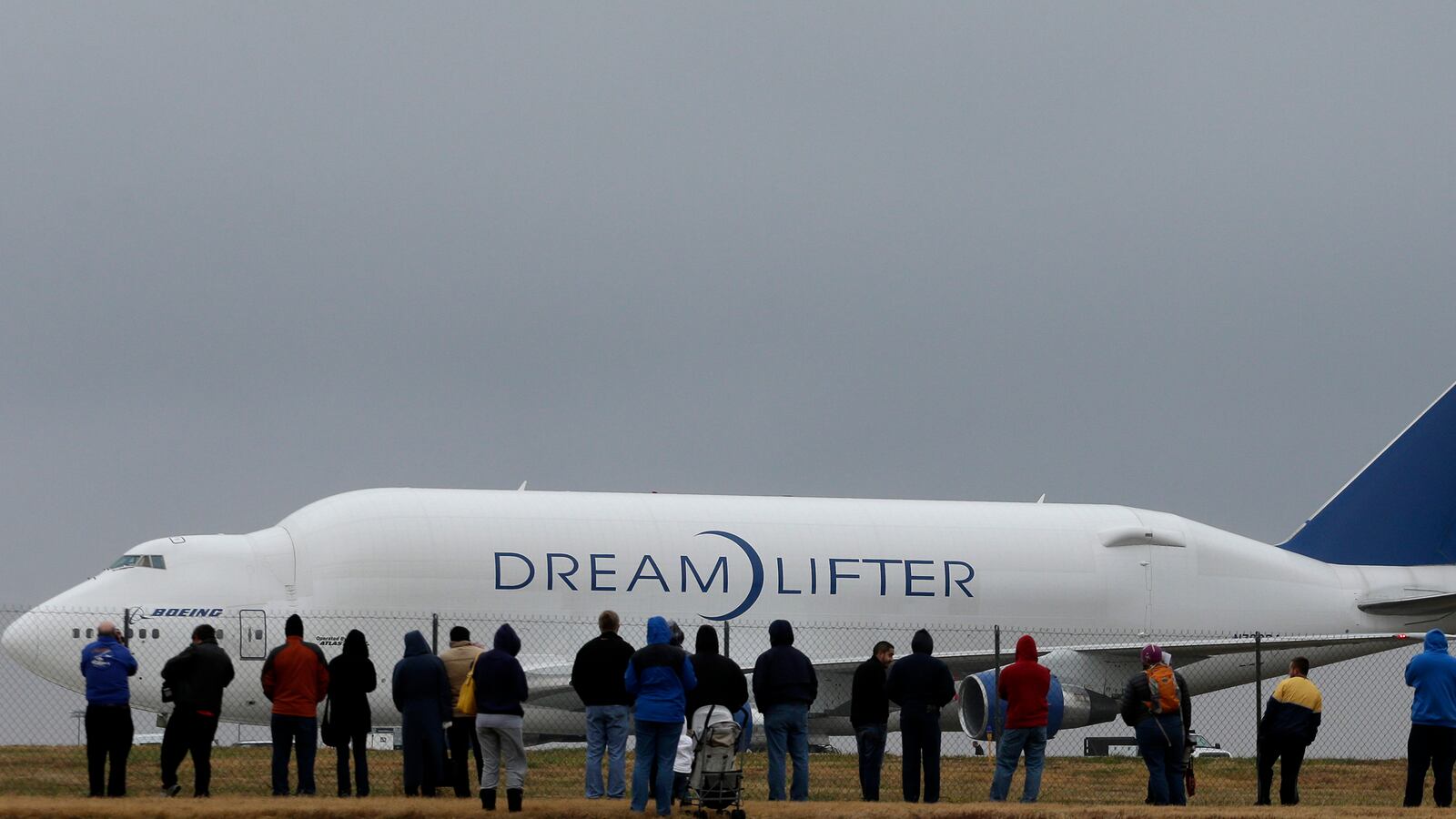Millions of Americans watched on Wednesday as a Boeing 747 struggled after landing at the wrong airport in Kansas. The 747 “Dreamlifter,” a specialty freighter designed and operated by Boeing to carry fuselage sections of its smaller 787 model, had intended to arrive at McConnell Air Force Base. Instead it touched down at the much smaller James Jabara Airport, about eight miles away.

This is one of those incidents that leaves the public, to say nothing of airline pilots like me, shaking our heads. How could a crew possibly land at the incorrect field?
It isn’t the first time such a thing has happened. Back in 2004, a Northwest Airlines flight en route from Minneapolis to Rapid City, South Dakota, landed accidentally at Ellsworth Air Force Base, six miles from its intended destination. That same year, a US Airways Express flight headed to State College, Pennsylvania, ended up in nearby Philipsburg instead. In 1995, a DC-10 touched down in Brussels instead of Frankfurt.
Suffice it to say, these were not easy mistakes to make, and they’re certainly an embarrassment to pilots everywhere. However, such screw-ups are often more complicated than they seem. In addition to whatever human mistakes are to blame, weather and air traffic control, among other factors, can lend a hand in getting from point A to point B—or, in this case, point C.
Consider the DC-10 that found itself in Belgium instead of Germany. It turned out that air traffic controllers had been given the wrong information and began issuing a long and complicated series of vectors and course changes to the crew, sending it toward Brussels instead of Frankfurt. Airspace in Europe is complex and often congested, and roundabout routings aren’t uncommon. So it wasn’t necessarily obvious to the crew that they were being led astray. By the time they realized what was happening, they opted to continue on to Brussels rather than request a re-clearance to Frankfurt due to fuel constraints. In other words, at a certain point it was safer to land at the wrong airport than the right one.
That’s not to say the situation over Kansas was quite the same, but the moral here is that there’s more to these situations than the media coverage typically implies.
Most of the time, jetliners land using what we call an ILS, or instrument landing system, in which air traffic control guides us onto a pair of crosshair signals—one vertical, the other horizontal—that we track to the runway, either manually or by coupling the ILS to the plane’s autoflight system. There are also what we call “non-precision” instrument patterns, which guide aircraft toward the general vicinity of the runway, if not to the very threshold as with an ILS. Then there’s what’s known as a “visual approach,” a procedure used when ceiling and visibility are above certain parameters—in other words, when the weather is good. Here, the crew identifies the airport by sight and continues toward the runway through whichever course and pattern is most practical.
In any of these cases, it’s difficult to mistake one airport for another, or one runway for another, but if it’s going to happen, it’s most likely to happen during a visual approach. (The 747 pilots on Wednesday were flying a non-precision RNAV approach into McConnell when they mistook one airport for the other.)
That’s not to suggest that visual approaches are by nature risky. Airline pilots perform hundreds, if not thousands, of successful visual approaches every day in this country without incident. Airline crews in general rely on checklists and other verification techniques to stay clear of such errors; double-checking the correct airport and runway orientation became a high-emphasis item in airline standard operating procedure after a Comair regional jet crashed when attempting a wrong-runway takeoff in Lexington, Kentucky, in 2006. While I am unsure which checklist techniques Boeing’s in-house pilots use, it’s something pilots are very careful about.
Yes, a potentially dangerous mistake was made in Kansas. But was it outright negligence or something more nuanced? Let's hold off judgment until Boeing and the FAA sort things out.
Much was made, meanwhile, of the 747’s subsequent departure out of James Jabara Airport, the trouble being that Jabara Airport’s main runway is only about 6,000 feet long. That’s considerably shorter than the distance usually required by a 747.
Notice, though, the “usually.” There is no fixed minimum takeoff (or landing) distance required by an aircraft. It’s always different, depending on weight, wind, temperature, airport elevation, power setting, and the intended flap and slat settings (those are the panels that extend from a plane’s wing to aid in low-speed flight). A 747 is a powerful aircraft, and if lightly loaded it can be airborne in a surprisingly short distance—sometimes a shorter distance than many smaller-size planes.
To wit, the takeoff out of Jabara went off without a hitch. No surprise there, despite the sensationalist media coverage that, perhaps by design, left people wondering, “Will they make it?”
Of course they were going to make it. Determining the required takeoff distance isn’t simply a judgment call. Pilots don’t eyeball the runway and say, “Yeah, that should be long enough, let’s give it a try.” Weight, weather, and the other variables all are balanced, and the crew knows exactly how much room the airplane is going to need. By regulation, a commercial flight cannot depart unless, once all the numbers are crunched, there remains enough pavement not merely to become airborne, but to come to a safe stop should the takeoff be aborted just prior to liftoff.
Yes, I see the humor in this story. Prior to departure, flight attendants often make a public address announcement asking that passengers make certain they are on the correct plane bound for the correct city. Should that reminder be extended to the cockpit?
Editor's note: This article has been updated to reflect that the pilots were flying a non-precision RNAV approach and not a visual approach into McConnell Air Force Base.






